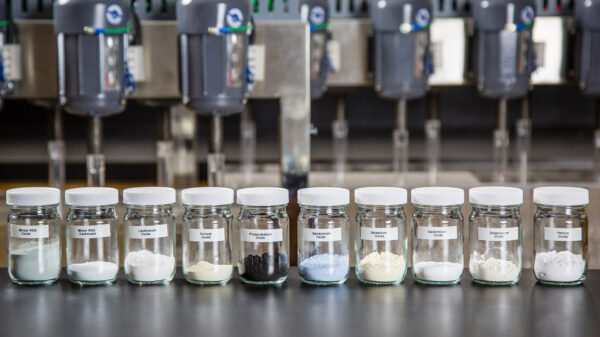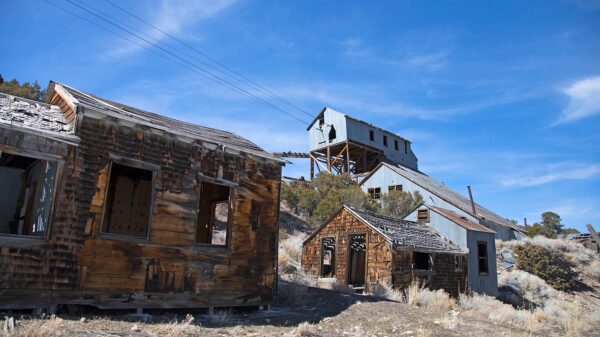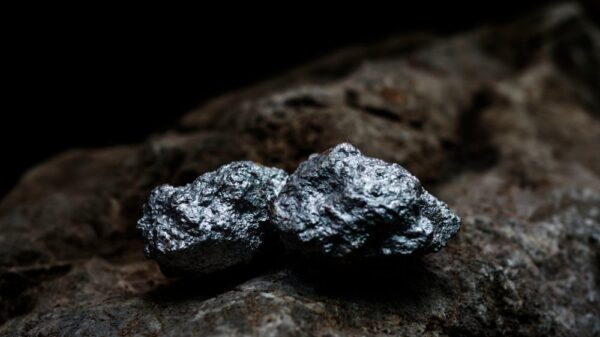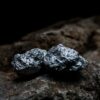United States Antimony Corp (NYSE: UAMY) is expanding its antimony-gold claims near Fairbanks, Alaska, and also in the Maclaren River areas south of the Alaska Range.
The company said on Monday that this land package will be part of a larger target for exploration in 2025, intending to get started in May, weather permitting.
Last summer, a critical minerals company that owns an antimony smelter in Montana began acquiring mineral-rich claims in Alaska. These claims hold antimony, copper, gold, silver, and other valuable resources.
Recently, United States Antimony expanded its Alaska holdings through a new lease and option agreement on land next to existing properties in the Fairbanks Mining District. The company also staked 18 more claims. The company increased its antimony-prospective land position in the Fairbanks area to 8,998 acres with these additions.
Rodney Blakestad, vice president of U.S. Antimony’s mining division, will lead the company’s programs in Alaska. Blakestad graduated from the University of Alaska, Fairbanks. He is an economic geologist with over 45 years of hard rock mining experience, including 20 in Alaska.
Along with early-season work on Fairbanks-area claims, U.S. Antimony is also planning exploration at its Stibnite Creek properties. These are near the Alaska Highway, about 200 miles southeast of Fairbanks.
The company also plans to explore its Mcleran River claims, located roughly 75 miles south of Delta Junction.
On Friday, the company also announced it secured a USD$5 million line of credit from Truist Bank to support its ongoing operations and strategic plans.
Read more: NevGold’s long intervals of antimony & gold mineralization turn heads
Read more: NevGold pulls critical mineral antimony from Limo Butte property in Nevada
Antimony is primarily used as a flame retardant
U.S. Antimony says its newly staked land at Stibnite Creek holds potential for silver, gold, zinc, and antimony.
The company views the metal mix at Stibnite Creek and other Alaska sites as key to securing domestic sources of critical minerals. These minerals support military, aerospace, quantum computing, and energy storage technologies.
Impressed by the quality of the antimony it has identified in Alaska, U.S. Antimony plans to ship raw material to its Montana processing facility later this year for testing.
Antimony is a brittle, silver-gray metalloid used primarily as a flame retardant and alloying agent used to enhance the fire resistance of plastics, textiles, and electronics.
Further, when alloyed with lead, antimony strengthens batteries, bullets, and cable sheathing.
It also plays a role in semiconductors, solders, and military applications. Additionally, antimony is vital for national defense, aerospace, and energy storage, making secure domestic supplies increasingly important for strategic industries.
Critical minerals as a whole are essential to modern technologies, clean energy, and national defense. These minerals include lithium, rare earth elements, cobalt, and antimony. They are used in everything from electric vehicle batteries and wind turbines to semiconductors and military equipment.
The United States currently depends heavily on imports for many of these materials, with China dominating the global supply chain. This reliance gives China significant geopolitical leverage, especially as tensions rise over trade, technology, and global influence.
Consequently, China controls large portions of the world’s mining and refining capacity, particularly for rare earth elements and battery metals. In recent years, it has threatened to restrict exports of these minerals, using them as a strategic tool.
Read more: NevGold completes maiden mineral resource estimate for Nutmeg Mountain in Idaho
Read more: NevGold discovers new untested areas at Limousine Butte
Global competition has produced opportunity
As global competition intensifies, securing critical minerals has become a national security issue. Companies like U.S. Antimony are now central to these efforts.
For example, NevGold Corp (CVE: NAU) (OTCMKTS: NAUFF) (FRA: 5E50) is advancing projects in the western U.S., with a growing focus on critical minerals like antimony and tungsten. Its exploration work in Nevada and Idaho targets gold systems that also host important strategic metals. Furthermore, Perpetua Resources Corp. (TSE: PPTA) (NASDAQ: PPTA) is developing the Stibnite Gold Project in Idaho, one of the only large U.S. sources of mined antimony. The project is also important for gold and restoration of a previously disturbed mining district.
Meanwhile, MP Materials (NYSE: MP) operates the Mountain Pass mine in California, the only active rare earths mine in the U.S. It plays a major role in supplying materials essential for electric vehicles and military systems, helping reduce reliance on China.
.
NevGold Corp is a sponsor of Mugglehead news coverage
.











